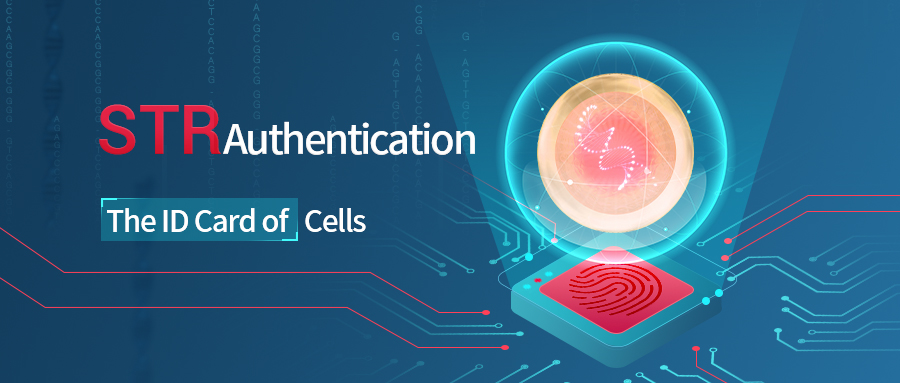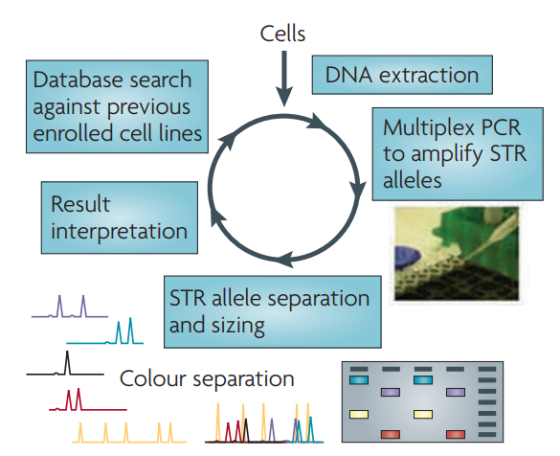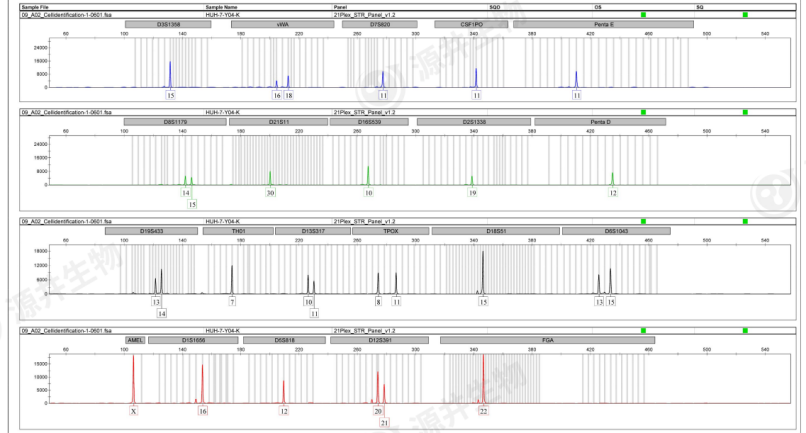STR Authentication - The ID Card of Cells

In biomedical research, cell lines are an important tool for studying cancer, genetics, and disease mechanisms. However, misidentification and cross-contamination of cell lines is a long-standing problem that not only wastes scientific research resources but can also lead to erroneous scientific conclusions. For example, ECV-304 cells, which are human umbilical vein endothelial cells, were later confirmed to be cross-contaminated with T24 bladder cancer cells [1]. This finding highlights the importance of cell line authentication. Fortunately, the emergence of STR authentication technology provides a solution to this problem.
What is STR Authentication?
STR is the abbreviation of "Short Tandem Repeats", which refers to a special pattern in the DNA sequence, that is, a string of short nucleotide sequences repeated. Since each individual's STR sequence is unique, it makes STR a powerful tool for individual identification [2]. STR authentication technology generates a unique genetic "fingerprint" by analyzing specific STR sites in DNA. This fingerprint can be compared with the STR database of known cell lines to confirm the true identity of the cell line.

Figure 1. STR analysis method
Why is STR Authentication so important?
1.Prevent cell cross-contamination: During the cell culture process, cross-contamination may occur between different cell lines. STR authentication can quickly identify this contamination and ensure the accuracy of the experiment.
2.Ensure the reliability of research results: Experiments with correct identities of cell lines can ensure the reliability of research results and avoid misleading conclusions caused by cell line errors.
3.Improve research efficiency: Through STR authentication, researchers can quickly eliminate incorrect cell lines, saving time and resources to improve research efficiency.
4.Journal and grant application requirements: Many scientific journals and grant agencies require cell STR data to prove the authenticity of the cell line.
When is STR Authentication necessary or recommended?
1.Establishment of new cell lines: When researchers first establish new cell lines from tissue samples, STR authentication is required to confirm their identity and purity.
2.Acquisition of cell lines: When cell lines are obtained from external sources (such as cell banks or other laboratories), STR authentication can verify the authenticity of the cell lines and whether they are cross-contaminated.
3.Before the experiment: STR authentication is performed on the cell lines used to ensure the accuracy of the experimental materials.
4.During the experiment: If the cell line shows abnormal phenotypes , such as changes in growth rate, morphology or genetic markers, STR authentication can help determine whether cross-contamination or genetic drift has occurred.
5.Before publication: STR authentication of the cell lines are required by many journals to ensure the reliability of the research results.
6.Regular testing of cell lines: Even if the cell line has been authenticated, it is a good idea to perform STR authentication regularly, especially after the cell line has been passaged many times.
Are there requirements for the number of detection loci?
1.When performing STR authentication on cell lines, the number of loci detected typically follows international standards and guidelines. According to recommendations from authoritative organizations such as ICLAC and ATCC, at least 13 core STR loci should be assessed for human cells [3]. To enhance the accuracy and resolution of identification, some laboratories and research institutions may opt to detect more.
2.The STR authentication report from Ubigene employs a comprehensive detection: 21 loci for human cell detection; 20 loci for mouse cell detection. This thorough identification report not only ensures the accuracy of cell identity but also supports researchers in conducting higher-quality and more reliable scientific work.

Figure 2. STR profiling of Ubigene’s HuH-7 cells
STR authentication technology is indispensable in biomedical research, providing an accurate and efficient method for cell line authentication. In next issue, we will discuss how STR authentication is conducted and how to interpret the results. Keep an eye out for upcoming updates.
References:
1. Dirks, W G et al. “ECV304 (endothelial) is really T24 (bladder carcinoma): cell line cross- contamination at source.” In vitro cellular & developmental biology. Animal vol. 35,10 (1999): 558-9.
2. American Type Culture Collection Standards Development Organization Workgroup ASN-0002. “Cell line misidentification: the beginning of the end.” Nature reviews. Cancer vol. 10,6 (2010): 441-8. doi:10.1038/nrc2852
3. https://www.atcc.org/search-str-database/str-profiling-analysis









